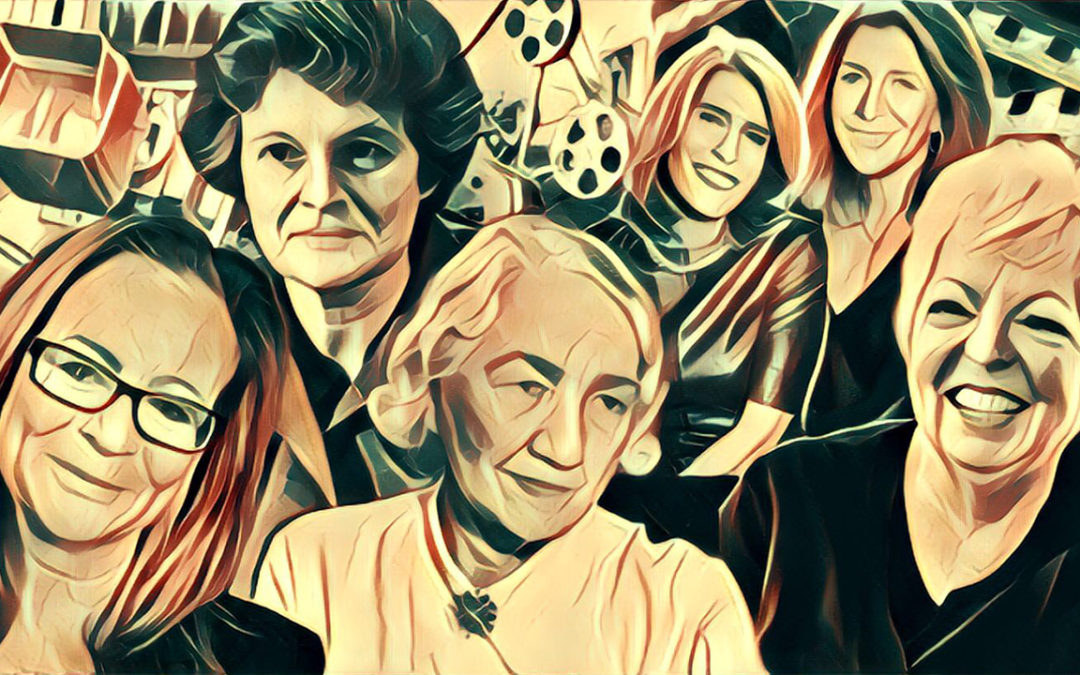In honor of Women’s History Month your friends at Lunacy will be posting content celebrating the contribution of women to the film industry. We continue this week with a look at female filmmakers who aren’t household names but have nonetheless shaped the history of cinema.
Before the rise of the studio system in the 1920s, women played a major role in all facets of filmmaking. The fluidity of creative positions in cinema’s early days meant there were opportunities for a stenographer like Dorothy Arzner to one day find herself in the director’s chair, or for starlet Mary Pickford to end up running her own studio. But as the five major studios consolidated their power and became self-sufficient “factories” of film, women were excluded from most positions of authority.
Except in the editing suite.
Perhaps it was the perceived subservience of the editor to the director. Or maybe it had more to do with the dexterity and artfulness that physical film cutting required. Whatever the reason, editing remained an acceptable profession for women throughout Hollywood’s golden era. As a result, the cutting room is where some of film’s greatest female artists were able to make their biggest contributions.
Today, Lunacy recognizes female film editors who collaborated with some of cinema’s most acclaimed auteurs.
1. Anne Bauchens
Bauchens began as an assistant to acclaimed director Cecil B. DeMille, sharing editing credits with him on her first two features. She was listed as the exclusive editor on almost all of his subsequent films in a 40 year career that extended from the silent era to the innovations of color photography and cinemascope. Along the way she accumulated three Academy Award nominations and one win, becoming the first woman ever awarded an Oscar for editing.
Must See Films: The Ten Commandments (1923 & 1956), The Greatest Show On Earth (1952)
2. Thelma Schoonmaker
Schoonmaker edited Martin Scorsese’s first feature, Who’s That Knocking At My Door?, in 1967 but they were unable to collaborate again until 1980, when she was finally admitted into the Motion Picture Editors Guild. That year she received an Academy Award for her work on Raging Bull. She has edited all of Scorsese’s subsequent films, bringing her dynamic and versatile style to an eclectic variety of projects, from The King of Comedy (1983) to Silence (2016). Her seven Oscar noms and three wins rank her among the most celebrated editors in Hollywood history.
Must See Films: Woodstock (1970), Raging Bull (1980), Goodfellas (1990)
Editing is a lot about patience and discipline and just banging away at something, turning off the machine and going home at night because you're frustrated and depressed, and then coming back in the morning to try again. -- Thelma Schoonmaker
3. Dede Allen
Allen worked her way into the editing suite after 16 grueling years at lower positions in the industry. When she got there she found herself among the vanguard of influential 1970s filmmakers who were changing the very language of cinema. Her daring use of straight cut transitions, impressionistic audio overlaps, and jarring jump cuts made her one of the most sought after editors of the 1970s. Best known for her collaborations with Arthur Penn and Sidney Lumet, Allen also worked on classic films such as The Hustler (1961), Reds (1981), and The Breakfast Club (1985).
Must See Films: The Hustler, Bonnie & Clyde (1967), Serpico (1973), Dog Day Afternoon (1975)
I wonder if we're raising enough people in a generation who are able to sit and look at a scene play out without getting bored if it doesn't change every two seconds. We talk an awful lot about cutting; we talk very little about not lousing something up by cutting just to make it move faster. -- Dede Allen
4. Sally Menke
Although Menke worked on a wide variety of projects over her 27 year career, she will always be best remembered for her collaborations with Quentin Tarantino. Beginning with his feature debut, Reservoir Dogs (1992), Menke edited every one of Tarantino’s films until her untimely death in 2010. Tarantino once referred to her as his only “genuine collaborator.” One need only watch his post-2011 work to appreciate her contribution. No editor since has been able to rein in Tarantino’s self indulgent flourishes, structure his sprawling narratives, or find the music in his digressive and transgressive dialogue quite like Menke.
Must See Films: Pulp Fiction (1994), Jackie Brown (1997), Inglourious Basterds (2009)
5. Maryann Brandon and Mary Jo Markey
Not familiar with their names? You definitely know their movies. Brandon and Markey are J. J. Abrams’ editors of choice. As such, they’ve cut a slew of top grossing blockbusters for more than a decade. From Mission: Impossible III (2006) to your Star-franchise of choice, these ladies know how to put together a perfectly paced, emotionally resonant crowd pleaser. Even if you aren’t into populist popcorn fare, you’ve got to respect the skill it takes to coalesce the many moving parts of a star-studded, FX-laden, multimillion dollar epic into a coherent story that will resonate with audiences.
Must See Films: Star Trek (2009), Super 8 (2011), Brandon – Kung Fu Panda 2 (2011), Markey – Life (2017)

